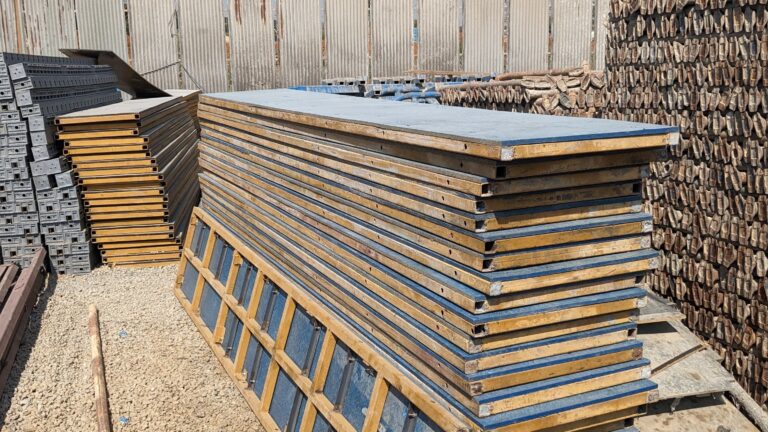Plastic shuttering sheets have gained popularity in construction due to their durability, reusability, and sustainability. However, like any material, improper usage can lead to costly mistakes and inefficiencies on the job site. To maximise the benefits of plastic shuttering and ensure smooth construction, it’s essential to avoid common mistakes that can impact performance and longevity.
In this blog, we’ll explore the most common errors made when using plastic shuttering sheets in concrete formwork and how to avoid them.
1. Incorrect Installation
One of the most frequent mistakes with plastic shuttering sheets is improper installation. Like traditional plywood or steel formwork, plastic shuttering requires careful alignment and secure fixing to ensure smooth concrete casting.
Solution: Always follow the manufacturer’s installation guidelines. Ensure that the plastic sheets are properly supported and aligned. Using appropriate clamps, connectors, and the recommended runners to hold the sheets firmly in place will prevent any movement during the pour, which can lead to uneven surfaces and rework.
2. Not Accounting for Sheet Flexibility
While plastic shuttering sheets are durable, they may flex under heavy loads if not adequately supported. This is particularly true when working with large panels or when the sheets are subjected to high concrete pressures.
Solution: Ensure proper bracing and support, especially for larger panels or high-rise projects where pressure on the formwork is greater. Proper reinforcement will prevent warping or bending, ensuring smooth surfaces and consistent results in the final concrete pour.
3. Reusing Sheets Without Proper Cleaning
One key advantage of plastic shuttering sheets is their reusability. However, many contractors make the mistake of not cleaning the sheets properly between uses. Concrete residue can build up on the sheets, leading to poor surface finishes. Unlike shuttering plywood and MS sheets, removing the concrete residue from plastic shuttering sheets is easier even after multiple repetitions. Using shuttering oil will enhance its lifespan.
Solution: After each use, thoroughly clean the plastic shuttering sheets to remove any concrete residue. Use non-abrasive tools and cleaning solutions that won’t damage the surface of the sheets. Proper cleaning will extend the life of your shuttering and ensure consistent concrete finishes with each reuse.
4. Underestimating the Long-Term Cost Benefits
Contractors often focus too much on the initial cost of plastic shuttering sheets without considering their long-term value. While the upfront cost may be higher than traditional plywood, plastic shuttering can be reused multiple times, resulting in significant cost savings over time.
Solution: Consider the long-term ROI of plastic shuttering sheets. With proper care and maintenance, these sheets can last 50+ uses, reducing the need for frequent replacements and saving money in the long run. Factor in the initial purchase price and the cost of replacement and disposal for plywood alternatives.
5. Ignoring Manufacturer Recommendations
Plastic shuttering sheets come with specific manufacturer guidelines regarding installation, load-bearing capacity, and maintenance. Ignoring these recommendations can result in improper usage, leading to compromised structural integrity or shortened product lifespan.
Solution: Always review and adhere to the manufacturer’s instructions for using plastic shuttering sheets. From installation techniques to maintenance schedules, following these recommendations will help ensure the best performance and longest lifespan for your formwork materials.
6. Not Factoring in the Buyback or Recycling Program
Many plastic shuttering sheets, especially those made from recycled plastic like WoWBoards, come with a buyback or recycling program once they reach the end of their useful life. Failing to take advantage of this option can result in unnecessary waste and lost value.
Solution: If your plastic shuttering sheets come with a buyback or recycling program, ensure that you factor this into your project lifecycle planning. These programs can help offset the initial cost and ensure that the materials are disposed of in an environmentally friendly way.
Conclusion
By avoiding these common mistakes, you can ensure that plastic shuttering sheets perform at their best, providing a high-quality, cost-effective, and sustainable solution for concrete formwork. Proper installation, maintenance, and material selection will not only extend the life of your formwork but also contribute to better project outcomes and reduced costs over time.
For contractors looking to transition from traditional materials like plywood to plastic, understanding these key points will help you maximize the benefits of this versatile and eco-friendly material.

